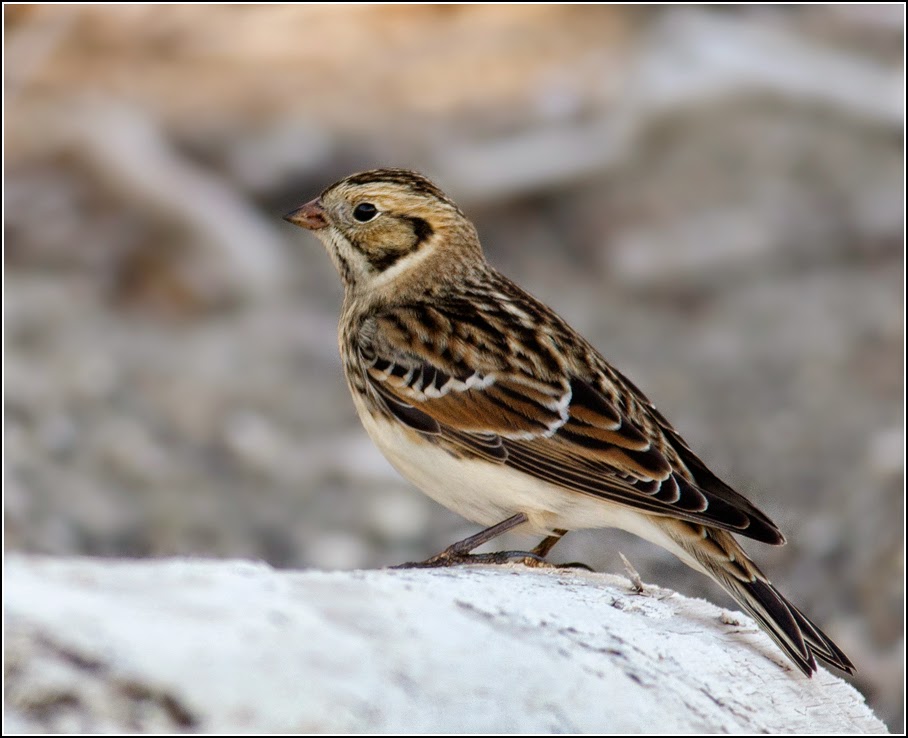Day 2: September 27, 2014
Day 3: September 28, 2014
Day 4: September 29, 2014
Day 5: September 30, 2014
Day 6: October 1, 2014
Day 7: October 2, 2014
Day 8: October 3, 2014
Day 9: October 4, 2014
Day 10: October 5, 2014
Day 11: October 6, 2014
Day 12: October 7, 2014
Days 13 and 14: October 8 and 9, 2014
September 30, 2014
2 to 12 to 4 degrees C, wind light and variable, clear skies
55 species
Ebird checklist: http://ebird.org/ebird/view/checklist?subID=S20206443
The morning dawned cold and clear and a thin layer of frost covered everything. The winds were dead calm but the sun quickly warmed the landscape, melting the frost in the open areas. Seawatching at the coast was futile at best as nothing much was migrating due to the lack of a breeze. Only five species of ducks were seen, all in very low numbers. A strange sight first thing in the morning was a group of Common Ravens that eventually grew to 47 in number, all moving slowly east in one large flock along the shoreline. Usually just the local pair (and perhaps an additional bird or two) are tallied in a given day.
A walk behind the line of spruces as the sun warmed the landscape turned up several sparrows species and a somewhat photogenic Hairy Woodpecker. Jeremy and I had a brief look at a Hermit Thrush - though long enough for us to take quick record photos through the shrubs.
 |
| Hairy Woodpecker - Netitishi Point |
 |
| Hermit Thrush - Netitishi Point |
A morning walk to the "Warbler Corner" failed to turn up any of the desired warblers, though this Red Squirrel kept a close eye on me as it ripped apart cones.
 |
| Red Squirrel - Netitishi Point |
By late morning the tide had completely receded and so I went for a walk by myself down the coast to the east to see what songbirds were active in the sunny calm weather. Among the highlights were good numbers of Fox Sparrows, a Savannah Sparrow, a Lincoln's Sparrow and a Rusty Blackbird. This Lapland Longspur foraged quietly along the tidal wrack.
 |
| Lapland Lonspur - Netitishi Point |
 |
| Lapland Lonspur - Netitishi Point |
By the time I returned to the cabins it was close to 2:00 PM. The sun was relatively high in the sky, raising the temperature to a balmy 12 degrees - quite comfortable when there is no wind. Jeremy, Kory and I went on a water run to the creek to the west. The swiftly flowing watercourse was looking rather inviting and so I stripped down and jumped in. The ice-cold creek water was refreshing to say the least!
As we began the half kilometer walk back we birded along a ridge, hoping to find flocks of sparrows as they moved up and down the ridge or within the dogwoods. As Kory and I passed an open area, he stopped and immediately got his bins on a bird - a Blue-gray Gnatcatcher! The tiny songbird flit in the dogwoods, evidently on the hunt for flies. Jeremy came running and got on the bird as well before it ducked back into the thicket. Since I did not have any optics on me I hustled back to the camp.
Fifteen minutes later I returned with all our cameras and with Alan not far behind. The guys had lost the gnatcatcher but were back in the thicket looking. I parked myself at the original location where Kory had spotted the bird and within minutes it re-appeared!
 |
| Blue-gray Gnatcatcher - Netitishi Point |
Eventually the four of us convened around the bird as it continued on foraging, occasionally flashing the black and white tail that is diagnostic for Blue-gray Gnatcatcher when compared to the other three gnatcatcher species in North America. Blue-gray Gnatcatcher, however is the only species on the Ontario list.
 |
| Blue-gray Gnatcatcher - Netitishi Point |
 |
| Blue-gray Gnatcatcher - Netitishi Point |
Blue-gray Gnatcatchers can be moderately common in willows, riparian areas and thickets; wherever suitable habitat occurs in southern Ontario. They are found in very low numbers north of Lake Ontario and can regularly be found north to Kawartha Lakes, Simcoe and Frontenac Counties. Vagrancy is common with this species and young birds in particular can be found far off course. Blue-gray Gnatcatcher has occurred about 20 times in northern Ontario including four previous times in the southern James Bay area.
 |
| Blue-gray Gnatcatcher - Netitishi Point |
 |
| Blue-gray Gnatcatcher - Netitishi Point |
We finished the day with a respectable 55 species - a good total considering the poor lake-watching weather. Up to this point in the trip we had tallied 97 species.

No comments:
Post a Comment